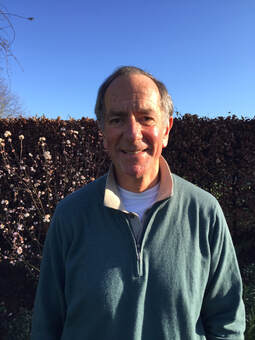
Kaida Brightscales, a curious dragon, loves exploring the meadows near her cave. One day, she meets Bella the Bee, who is feeling sick, and she is not the only one. With the help of a hardworking ant and a knowledgeable butterfly, Kaida sets out on a mission to cure Bella and her friends of their mysterious sickness. Along the way, Kaida learns about the importance of pollination and the hard work of bees.
This delightful book for children ages 3 to 6 is filled with beautiful illustrations and a captivating story that teaches important lessons about empathy, teamwork, and the wonders of nature.
Join Kaida on her adventure as she uncovers the secrets of the beehive and learns about the power of friendship and collaboration.

(review request submitted by the author for an honest critique)
Children are going to adore Tamar Blaauw’s beautiful illustrations. The artist couldn’t have selected a better collection of colors for the main star, Kaida. The dragon practically shimmered off the pages. I thought shading specific text in bright colors was an ingenious idea. Words that pop always capture a reader’s eye.
In Beehive Secrets and the Magical Meadows, Kaida is fascinated by insects. First, she crosses paths with a very busy butterfly. Through their interaction, children will discover why the butterfly flutters from flower to flower and new terminology will be introduced: pollinate.
Next up, Kaida spots a tiny ant carrying a berry. Through their talk, we learn where the ant is going and why. Of course, Kaida offers her assistance to the tired insect. Then, Kaida spots a sad bee holding a metal bucket of nectar. The poor bee admits to feeling under the weather. Kaida, the kind-hearted dragon she is, helps the ailing insect complete his job. She also seeks the help of her new buggy friends (ant and butterfly), and together, they work as a team to help Bella the bee feel better.
Beehive Secrets and the Magical Meadows is a story teaching children to be kind and helpful. It also educates young readers about why these insects carry out the jobs they do. It does end without a complete resolution; Bella (bee) is still seeking a cure for her sickness. Even though I wanted a more unified conclusion, the story got its point across: “While the bees in the story may face challenges like sickness, this is ultimately a tale of hope and the power of working together to overcome adversity.”
Amazon recommends Beehive Secrets and the Magical Meadows for ages 3-6.
9/4/23: The book’s title, age bracket and synopsis has been updated since I read the book and created my post. I have not read it again. I have not updated my review to reflect any changes.
Heart Rating System:
1 (lowest) and 5 (highest)
Score:
Meet the Author

Xanda was born in the small town of Beira on the East Coast of Mozambique, a place that holds a special place in my heart. It’s home to the magnificent Farol do Macuti, a lighthouse that has guided countless ships to safety over the years.
One of my fondest memories is the excitement my dad brought home with a new toy – the first Polaroid camera! I still remember the anticipation as we waited for the picture to develop on the square paper. To make the image last, we had to spread the fixer over the picture, which had a distinct smell that remains etched in my mind from childhood. It was an unnatural sharp, chemical and fruity sweet odour, but to us, it meant preserving memories that would last a lifetime.
But my childhood memories were not limited to photography. It was also with my dad that I experienced my first solar eclipse, an unforgettable sight that left me in awe of the natural world. Looking back, those memories of my childhood in Mozambique still fill me with a sense of wonder and appreciation for the beauty of life.
Growing up in Africa was an adventure in itself. I loved nothing more than exploring the vast landscape around me, always eager to discover new and exciting things. But with that excitement came a hint of danger. Some places and animals I encountered were quite hazardous, adding an extra layer of thrill to my explorations.
Today, I still hold a deep appreciation for the wonders of nature and the joy of exploration, and have added meditation and QiGong to my life as a way to continue that sense of wonder and connection to the world around me.
Author Website
Amazon Author page
Twitter Link
















